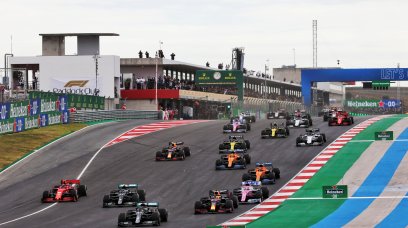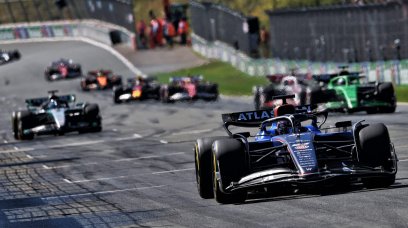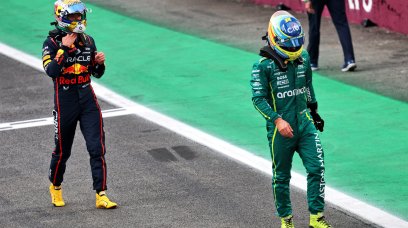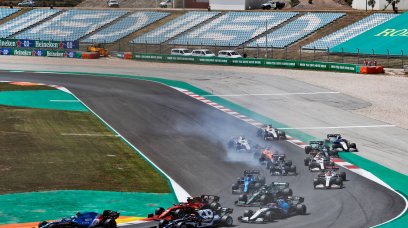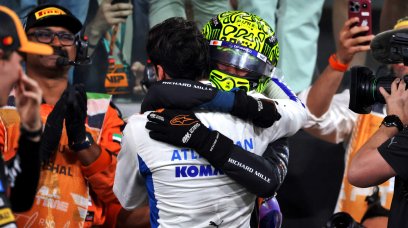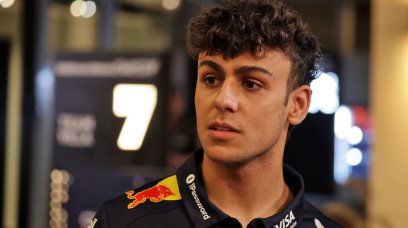For Red Bull, every year must feel like groundhog day. After good winter testing, they arrive in Melbourne only for Mercedes to have found an extra few tenths - seemingly out of nowhere. The team then spends the rest of the campaign attempting to close the gap, often managing to do so by the end of the season - as 2020 proved once again. Here then, is just how big the gap has been at race one throughout the V6 hybrid era.
2014
In 2014, Red Bull started the season as reigning world champions. However, all of their superiority over the rest of the pack was eliminated for the following year, as the introduction of the hybrid powertrains set everything back to one. Once qualifying got underway, it became clear that Mercedes had the best car by some distance, with Lewis Hamilton taking pole, establishing a solid gap of 0.317s back to Daniel Ricciardo in the lead Red Bull. By race day, the Aussie conceded 0.588s to Nico Rosberg's fastest lap.
2015
For 2015, four-time world champion Sebastian Vettel would depart, with Russian Daniil Kvyat taking his seat. Ricciardo was once again the fastest Red Bull in qualifying, but the gap to the Mercedes up the road had grown considerably to over 2 seconds. Come race day, Mercedes' dominance was almost as emphatic, as Hamilton was 1.852 seconds fastest than Ricciardo. Red Bull didn't manage a race win all season.
2016
The 2016 season didn't start much better for the Austrian team. Although the gap to Mercedes did shrink slightly, Red Bull were still some margin off being able to challenge for the race win. In qualifying, Daniel Ricciardo was 1.752 seconds slower than pole man Hamilton. The race times are skewed somewhat by the fact that Ricciardo set the fastest lap on supersofts - while the Briton's best time came while on Mediums tyres.
2017
In 2017, Max Verstappen started his first full season as a Red Bull driver. The Dutchman was also the fastest Red Bull car in Melbourne and managed to marginally close the gap to the Silver Arrows. In qualifying, Hamilton beat Verstappen by 1.397 seconds to earn yet another pole. For the first time in the hybrid era, Red Bull was also bested by Ferrari in terms of one-lap speed - a sign of what was to come. Kimi Raikkonen would set the fastest lap of the race, while Vertsappen conceded 0.371 seconds to Valtteri Bottas.
2018
Where Red Bull's start to the season has so far been poor, especially in terms of qualifying pace, the beginning of 2018 offered a glimmer of hope. While Verstappen started from fourth, the gap to pole sitter Hamilton was down to 0.715 seconds. This was the smallest difference between the two cars since Ricciardo back in 2014. The Aussie also set the fastest lap of the race towards the end on a fresh set of supersofts.
2019
Any speed Red Bull managed to claw back in 2018 had seemingly been lost by the beginning of the 2019 season. Vertstappen was 0.834 seconds off Hamilton's pole time for Mercedes. Race pace was slightly better for Red Bull, as Max's best time was just 0.676 seconds of Bottas' blistering fastest lap.
2020
With a disrupted calendar and a European summer start date, the 2020 season is a bit of an anomaly - as is therefore hard to compare to others. The season started in Austria, which is a much shorter and fastest track than Albert Park. The fairer comparison is therefore with Austria 2019, and doing so reveals how monstrous the 2020 Mercedes really was. Where Verstappen was only 0.177s slower than Hamilton in 2019 qualifying, by 2020 that had ballooned to half a second - with Bottas this time claiming pole.
Conclusion
The gap is no longer as big as it was during the first years of the hybrid era, and Red Bull have shown an ability to close said gap considerably over the course of a season. If Red Bull are within touching distance of the Mercedes cars by the conclusion of qualifying in Bahrain, we could be in for a very close contest indeed between the two rival teams.
Most read
